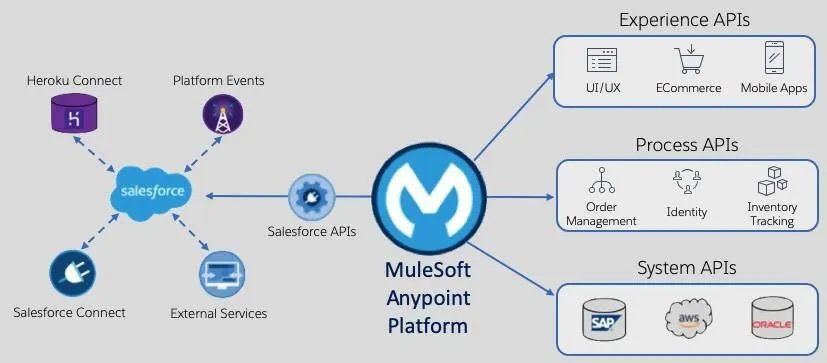Enterprise UX Research Framework Implementation
Establishing Scalable Product Health Evaluation Systems for Salesforce
Image: https://trailhead.salesforce.com/content/learn/modules/connectors-for-data-integration/unlock-external-data-to-build-connected-experiences
Project Overview
Led the development and implementation of comprehensive UX research frameworks for evaluating product health across MuleSoft's enterprise integration platform following its acquisition by Salesforce. The initiative focused on creating sustainable, repeatable research processes that could be operationalized across multiple teams and product components.
Strategic Challenge
The organization needed to:
Establish metrics for ongoing product health assessment
Standardize UX research methodologies across newly acquired products
Create scalable evaluation frameworks that could be consistently applied
Build research capacity within existing product teams
Integrate research processes with existing development workflows
My Role & Responsibilities
As Project Lead, I:
Designed and implemented enterprise-wide research frameworks
Led training and enablement for cross-functional teams
Managed relationships with product owners and stakeholders
Orchestrated research activities across multiple product lines
Facilitated knowledge transfer and process adoption
Framework Development & Implementation
Phase 1: Research System Design
Developed customized heuristic evaluation methodology
Created comprehensive research templates and guidelines
Established standardized metrics for product health evaluation
Designed reproducible usability testing protocols
Built documentation systems for research findings
Phase 2: Team Enablement
Implemented a multi-tiered training program covering:
Heuristic evaluation methodologies
Usability testing protocols
Research documentation practices
Data synthesis techniques
Findings communication strategies
Phase 3: Process Implementation
Conducted baseline usability assessments across product lines
Facilitated collaborative workshops with component teams
Established feedback loops for continuous improvement
Created systems for cross-team knowledge sharing
Key Deliverables
1. Research Framework Documentation
Detailed heuristic evaluation guidelines
Usability testing protocols
Templates for research planning and execution
Documentation standards
Best practices guides
2. Training Materials
Workshop curricula
Hands-on exercise materials
Reference guides
Process flow documentation
Quality assurance checklists
3. Implementation Tools
Research planning templates
Data collection instruments
Analysis frameworks
Reporting templates
Collaboration guides
4. Strategic Recommendations
Short-term optimization opportunities
Long-term strategic initiatives
Resource allocation guidelines
Process improvement roadmap
Impact & Results
Immediate Outcomes
Established baseline metrics for product health
Created reusable templates and processes
Long-term Benefits
Improved product team autonomy in conducting research
Enhanced consistency in UX evaluation across products
Accelerated research implementation timelines
Increased cross-team collaboration
Standardized quality metrics across product lines
Implementation Success Factors
Collaborative approach to framework development
Emphasis on practical, actionable methodologies
Strong focus on knowledge transfer and team enablement
Integration with existing Mulesoft development processes
Regular feedback incorporation from stakeholders
Tools & Methods Used
Heuristic Evaluation Frameworks
Usability Testing Protocols
Workshop Facilitation Techniques
Documentation Systems
Training Development Tools
Collaboration Platforms
Key Learning & Innovation
Developed novel approaches to scaling research practices
Created efficient methods for knowledge transfer
Established sustainable feedback mechanisms
Built systems for continuous improvement
Integrated research into existing development workflows





